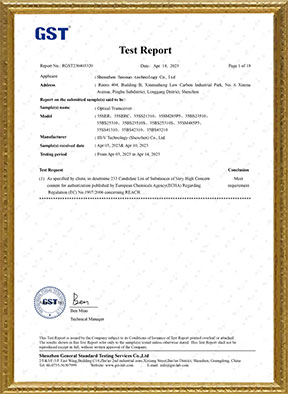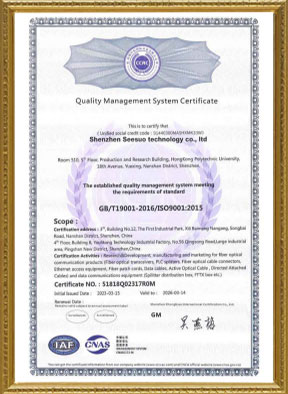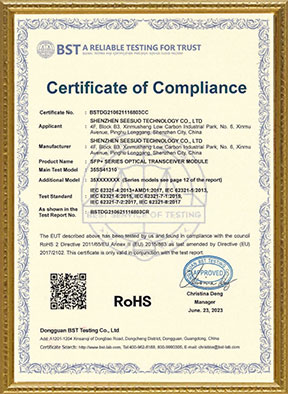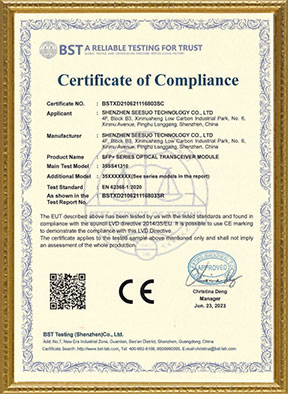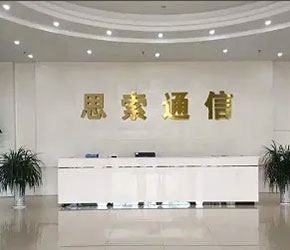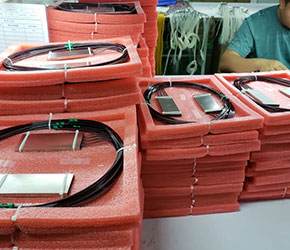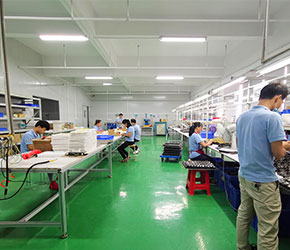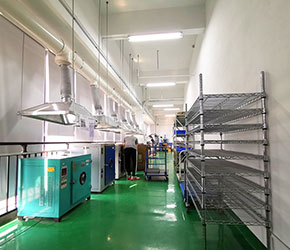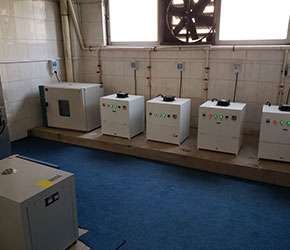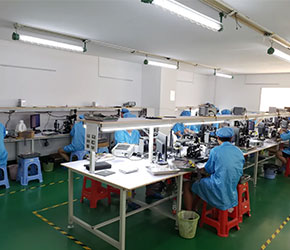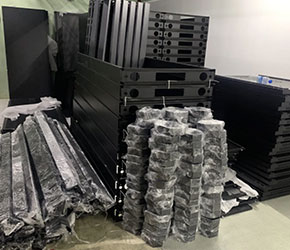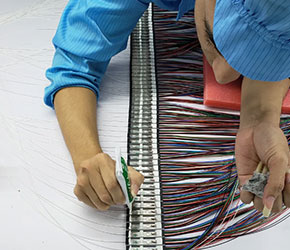CWDM SFP Transceiver is a convenient and cost-effective solution for the adoption of Gigabit Ethernet and Fiber Channel(FC) in campus, data-center, and metropolitan-area access networks, with maximum optical budget 41dB. CWDM SFP modules support data rates from 100 Mbps up to 4.25 Gbps. There are 18 center wavelengths available from 1270 nm to 1610 nm, with each step 20 nm. These wavelengths are compliant to the ITU G.694 CWDM standard.
Optical Characteristics:
The following optical characteristics are defined over the Recommended Operating Environment unless otherwise specified.
|
Parameter |
Symbol |
Min. |
Typical |
Max |
Unit |
Notes |
|
Transmitter |
||||||
|
Center Wavelength |
λC |
X-6.5 |
X |
X+6.5 |
nm |
1 |
|
Spectrum Bandwidth(RMS) |
σ |
1 |
nm |
|||
|
Side Mode Suppression Ratio |
SMSR |
30 |
dB |
|||
|
Average Optical Power |
PAVG |
-2 |
3 |
dBm |
2 |
|
|
Optical Extinction Ratio |
ER |
8.2 |
dB |
|||
|
Transmitter OFF Output Power |
POff |
-45 |
dBm |
|||
|
Transmitter Eye Mask |
Compliant with G.957(class 1 laser safety) |
|||||
|
Receiver |
||||||
|
Center Wavelength |
λC |
1270 |
1610 |
nm |
||
|
Receiver Sensitivity (Average Power) |
Sen. |
-19 |
dBm |
3 |
||
|
Input Saturation Power (overload) |
Psat |
0 |
dBm |
|||
|
LOS Assert |
LOSA |
-36 |
dB |
4 |
||
|
LOS De-assert |
LOSD |
-20 |
dBm |
4 |
||
|
LOS Hysteresis |
LOSH |
0.5 |
2.0 |
6.0 |
dBm |
|
Features:
-
Compliant with SFP MSA and SFF-8472 with duplex LC receptacle
-
18-Wavelength CWDM DFB LD Transmitter from 1270nm to 1610nm, with Step 20nm
-
Digital Diagnostic Monitoring
-
Internal Calibration or External Calibration
-
Compatible with RoHS
-
+3.3V single power supply
-
Operating case temperature:
-
Standard: 0 to +70°C
-
Industrial: -40 to +85°C
-
Applications:
-
Fiber Channel Switch Infrastructure
-
ATM Switches and Routers
-
SONET / SDH Switch
-
Other optical link
-
Fast Ethernet, Giga Ethernet
2.5Gbps SFP Duplex, WDM, CWDM, DWDM Transceiver Module Fully compatible with Cisco, HP, Alcatel, H3C, Huawei, Juniper, ZTE, Zyxel, D-Link, Extreme, Nortel, Netgear, Enterasys, Founfry, Adtran, Brocadem Marconi, Finisar etc.
Benefits and Advantages of CWDM Transceivers:
A CWDM (Coarse Wavelength Division Multiplexing) transceiver is a device that enables the transmission of multiple optical signals over a single optical fiber by using different wavelengths of light. It is commonly used in telecommunications networks to increase the capacity and efficiency of the fiber infrastructure.
The primary benefit of CWDM transceivers is their ability to transmit multiple signals simultaneously over a single fiber. This allows for a significant increase in bandwidth without the need for additional fibers, which can be costly and time-consuming to install. By using different wavelengths of light to carry different signals, CWDM transceivers can effectively multiplex and demultiplex the signals at the transmitting and receiving ends.
One of the key advantages of CWDM transceivers is their cost-effectiveness. Compared to other technologies like DWDM (Dense Wavelength Division Multiplexing), CWDM transceivers are more affordable and easier to implement. This makes them an attractive solution for small and medium-sized networks that require increased capacity but have budget constraints.
Another advantage of CWDM transceivers is their flexibility. They can support a wide range of transmission distances, from a few kilometers to tens of kilometers. This makes them suitable for various applications, including metropolitan area networks (MANs), campus networks, and data centers.
Additionally, CWDM transceivers are compatible with existing fiber infrastructure, making it easy to upgrade and expand network capacity without major infrastructure changes. This compatibility also allows for seamless integration with other optical networking equipment.
In the latest point of view, CWDM transceivers are gaining popularity in the context of 5G networks. With the increasing demand for high-speed and low-latency connectivity, CWDM transceivers provide a cost-effective solution to support the growing bandwidth requirements of 5G networks. They enable the efficient utilization of fiber resources and help network operators meet the demands of the ever-increasing data traffic.
Overall, CWDM transceivers offer numerous benefits and advantages, including increased capacity, cost-effectiveness, flexibility, compatibility, and now, support for 5G networks. As the demand for high-speed data transmission continues to grow, CWDM transceivers will play a crucial role in enabling efficient and reliable communication networks.
FAQ:
Which is better CWDM or DWDM?
The sweet spot for CWDM is up to 10 Gigabit Ethernet and 16G Fibre Channel. And it is quite unlikely capacities with increase beyond this in the future. DWDM however, is able to handle higher speed protocols up to 100Gbps per channel making it a more suitable technology for higher speed protocols.
What is the difference between CWDM and DWDM SFP?
Compared to DWDM, CWDM is easier to deploy and manage as it needs fewer optical hardware components. Additionally, CWDM uses wider wavelength spacing, which helps bring down costs. CWDM systems generally use 8, 16, or 32 channels, while DWDM systems can support up to 96 channels.
What is the maximum distance for CWDM?
80km.
CWDM signals cannot be amplified, but signals can be carried across all 18 ITU channels for distances up to 80km, which limits it as a lower cost solution for networks in metropolitan areas, for example.
Data-rate of 2.488Gbps operation
CWDM DFB wavelengths laser and PIN/APD photodetector for 40km/80km/120km transmission
Compliant with SFP MSA and SFF-8472 with duplex LC receptacle
Digital Diagnostic Monitoring
Compatible with RoHS
Single 3.3V power supply
Operating case temperature: Standard: 0 to +70°C
Gigabit Ethernet
Fiber Channel
Metro/Access Networks
Switched backplane applications
Router/Server interface
Other optical transmission systems
| Product Model | Rate | Wavelength | Distance | Connector | Cable Type | DDM |
|---|---|---|---|---|---|---|
| SS-SFP2.5G-40Cxx-L | 2.5G | 1270nm~1610nm | 40km | LC | SMF | With DDM |
| SS-SFP2.5G-80Cxx-L | 2.5G | 1270nm~1610nm | 80km | LC | SMF | With DDM |
| SS-SFP2.5G-120Cxx-L | 2.5G | 1270nm~1610nm | 120km | LC | SMF | With DDM |

OEM Manufacturer
SEESUO provides tailored OEM products based on clients' designs and specs.

ODM Manufacturer
SEESUO boastis rich R&D experence and top-notch production management.

Customized production
SEESUO provides talored product design,development, and flexible manufacturing.

R&D cooperation
SEESUO adapts swifly to market changes collaborating with customers in R&D.
-
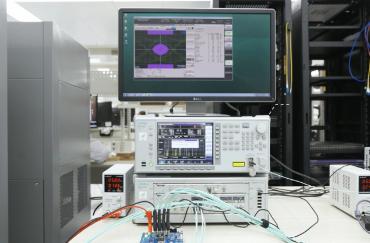 Performance ValidationVerifies output power, sensitivity, and extinction ratio for reliable and clear data transmission.
Performance ValidationVerifies output power, sensitivity, and extinction ratio for reliable and clear data transmission. -
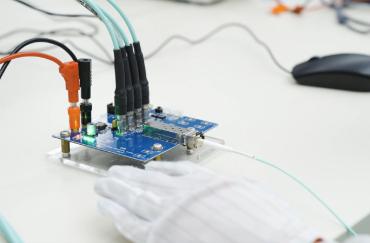 Compatibility AssessmentEnsures module interoperability, stable performance across brands, and reliability in diverse network environment.
Compatibility AssessmentEnsures module interoperability, stable performance across brands, and reliability in diverse network environment. -
 Quality EvaluationEnsures material compliance, process quality, equipment accuracy, and product specification through systematic monitoring.
Quality EvaluationEnsures material compliance, process quality, equipment accuracy, and product specification through systematic monitoring. -
 Environmental Adaptability AnaTests fiber compatibility, temperature resilience, and long-distance signal stability for reliable module performance.
Environmental Adaptability AnaTests fiber compatibility, temperature resilience, and long-distance signal stability for reliable module performance. -
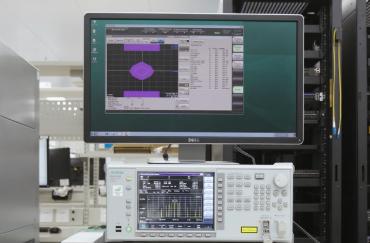 Data Rate Performance ExaminatEvaluates module capability, stability, and rate-switching performance across diverse transmission rates.
Data Rate Performance ExaminatEvaluates module capability, stability, and rate-switching performance across diverse transmission rates. -
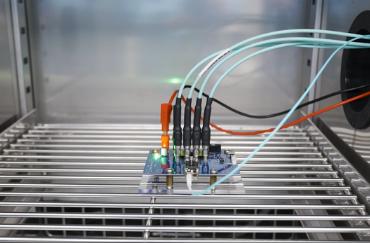 Final InspectionEnsures cleanliness, functionality, specification compliance, and packaging integrity for reliable product delivery.
Final InspectionEnsures cleanliness, functionality, specification compliance, and packaging integrity for reliable product delivery.
How does the 2.5G CWDM SFP transceiver improve network efficiency?
What are the typical operating conditions for the 2.5G CWDM SFP transceiver?
What advantages does CWDM technology offer over traditional optical transmission methods?
4.7

 Leila PourIran
Leila PourIran 4.7Plugged the 2.5G CWDM SFP into my Huawei S5700 for extended fiber runs across the building. Handles long-range 2.5G speeds like a champ!
4.7Plugged the 2.5G CWDM SFP into my Huawei S5700 for extended fiber runs across the building. Handles long-range 2.5G speeds like a champ!
 Daniel CohenIsrael
Daniel CohenIsrael 4.7Running this 2.5G CWDM SFP in a Brocade ICX 7250. It’s been rock-solid for our point-to-point links over 40km—totally worth the investment!
4.7Running this 2.5G CWDM SFP in a Brocade ICX 7250. It’s been rock-solid for our point-to-point links over 40km—totally worth the investment!




























































 Online consultation
Online consultation Send email
Send email









